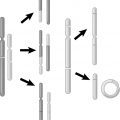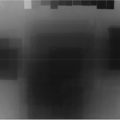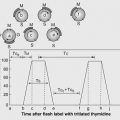10
BIOLOGY OF CANCER
KAILIN YANG AND JENNIFER S. YU
Question 1
What is a hallmark of cancer cells?
Question 3
What is a tumor suppressor gene?
Question 1 What is a hallmark of cancer cells?
Answer 1
The hallmark of cancer cells is deregulated control of cell division and failure for self-elimination. It is like a Darwinian-like process in which the fittest cells replicate to become the dominant population of a tumor.
Hall EJ, Giaccia AJ. Cancer biology. In: Hall EJ, Giaccia AJ, eds. Radiobiology for the Radiologists. 7th ed. Philadelphia, PA: Lippincott Williams & Wilkins; 2012:274–303.
Question 3 What is a tumor suppressor gene?
Answer 3
A tumor suppressor gene is a negative growth regulator. It modulates cellular proliferation and survival by antagonizing the functions of proto-oncogenes or responding to unchecked growth signals. In most cases, loss-of-function mutations of both copies of tumor suppressor are needed for tumor progression.
Hall EJ, Giaccia AJ. Cancer biology. In: Hall EJ, Giaccia AJ, eds. Radiobiology for the Radiologists. 7th ed. Philadelphia, PA: Lippincott Williams & Wilkins; 2012:274–303.
Question 5
What causes normal tissues to transform into tumors and metastasize?
Question 7
Are tumors composed of a homogenous or heterogeneous group of neoplastic cells?
Question 5 What causes normal tissues to transform into tumors and metastasize?
Answer 5
Malignant progression occurs in a series of steps over a period of time. Malignant progression is typically caused by gain-of-function mutations that activate oncogenes, loss-of-function mutations that inactivate tumor suppressor genes, and loss of activity of DNA stability genes that increases the probability of genomic instability. These gene changes result from random errors or exposure to various agents including chemical mutagen, ionizing radiation, ultraviolet light, and viral infection. Malignant progression gradually alters the regulatory mechanisms of a single cell in proliferation, self-elimination, immortalization, and genetic stability, creating the clonal origin of a tumor. Tumors also evade immune mechanisms.
Hall EJ, Giaccia AJ. Cancer biology. In: Hall EJ, Giaccia AJ, eds. Radiobiology for the Radiologists. 7th ed. Philadelphia, PA: Lippincott Williams & Wilkins; 2012:274–303.
Question 7 Are tumors composed of a homogenous or heterogeneous group of neoplastic cells?
Answer 7
Although tumor cells are considered clonal in origin, most tumor types contain heterogeneous populations of cells that differ in their ability to repopulate the tumor or form metastases. In many cancers, only a small percentage of tumor cells possess the ability to form a tumor, leading to the concept that tumors possess “stem-like cells” and that elimination of these stem-like cells is essential for controlling tumor growth.
Hall EJ, Giaccia AJ. Cancer biology. In: Hall EJ, Giaccia AJ, eds. Radiobiology for the Radiologists. 7th ed. Philadelphia, PA: Lippincott Williams & Wilkins; 2012:274–303.
Question 9
What are four mechanisms for oncogene activation in human neoplasms?
Question 11
Which gene is mutated in familial retinoblastoma (Rb)? What is the epidemiological inheritance pattern of this mutation?
Question 9 What are four mechanisms for oncogene activation in human neoplasms?
Answer 9
Four mechanisms are retroviral integration through recombination, DNA mutation of regulatory sites, gene amplification, and chromosome translocation.
Hall EJ, Giaccia AJ. Cancer biology. In: Hall EJ, Giaccia AJ, eds. Radiobiology for the Radiologists. 7th ed. Philadelphia, PA: Lippincott Williams & Wilkins; 2012:274–303.
Stay updated, free articles. Join our Telegram channel

Full access? Get Clinical Tree






